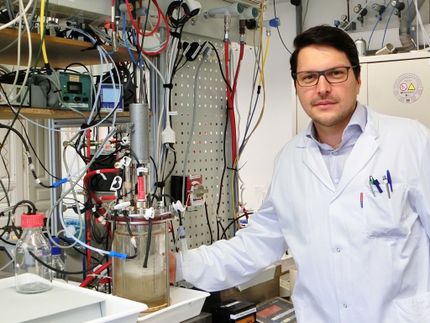Knowing whether food has spoiled without even opening the container
A color-coded smart tag could tell consumers whether a carton of milk has turned sour or a can of green beans has spoiled without opening the containers, according to researchers. The tag, which would appear on the packaging, also could be used to determine if medications and other perishable products were still active or fresh, they said.
"This tag, which has a gel-like consistency, is really inexpensive and safe, and can be widely programmed to mimic almost all ambient-temperature deterioration processes in foods," said Chao Zhang, Ph.D., the lead researcher of the study. Use of the tags could potentially solve the problem of knowing how fresh packaged, perishable foods remain over time, he added. And a real advantage, Zhang said, is that even when manufacturers, grocery-store owners and consumers do not know if the food has been unduly exposed to higher temperatures, which could cause unexpected spoilage, "the tag still gives a reliable indication of the quality of the product."
The tags, which are about the size of a kernel of corn, would appear in various color codes on packaging. "In our configuration, red, or reddish orange, would mean fresh," explained Zhang, who is at Peking University in Beijing, China. "Over time, the tag changes its color to orange, yellow and later green, which indicates the food is spoiled." The colors signify a range between 100 percent fresh and 100 percent spoiled. For example, if the label says that the product should remain fresh for 14 days under refrigeration, but the tag is now orange, it means that the product is only roughly half as fresh. In that case, the consumer would know the product is edible for only another seven days if kept refrigerated, he explained.
The researchers developed and tested the tags using E. coli (food-spoiling bacteria that cause gastrointestinal problems) in milk as a reference model. "We successfully synchronized, at multiple temperatures, the chemical evolution process in the smart tag with microbial growth processes in the milk," according to Zhang. The tags could also be customized for a variety of other foods and beverages.
The tags contain tiny metallic nanorods that, at different stages and phases, can have a variety of colors: red, orange, yellow, green, blue and violet, Zhang explained. "The gold nanorods we used are inherently red, which dictates the initial tag color," he said. "Silver chloride and vitamin C are also in the tags, reacting slowly and controllably. Over time, the metallic silver gradually deposits on each gold nanorod, forming a silver shell layer. That changes the particle's chemical composition and shape, so the tag color now would be different. Therefore, as the silver layer thickens over time, the tag color evolves from the initial red to orange, yellow, and green, and even blue and violet."
Although the nanorods are made of gold and silver, a tag would still be very inexpensive, and all the chemicals in the tiny tag cost much less than one cent — $0.002. "In addition, all of the reagents in the tags are nontoxic, and some of them (such as vitamin C, acetic acid, lactic acid and agar) are even edible," he explained.
This technique has been patented in China, and some preliminary results have been published in ACS Nano, Zhang said. He added that the next step is to contact manufacturers and explain how the tag would be useful for them and their customers.
Other news from the department science

Get the chemical industry in your inbox
By submitting this form you agree that LUMITOS AG will send you the newsletter(s) selected above by email. Your data will not be passed on to third parties. Your data will be stored and processed in accordance with our data protection regulations. LUMITOS may contact you by email for the purpose of advertising or market and opinion surveys. You can revoke your consent at any time without giving reasons to LUMITOS AG, Ernst-Augustin-Str. 2, 12489 Berlin, Germany or by e-mail at revoke@lumitos.com with effect for the future. In addition, each email contains a link to unsubscribe from the corresponding newsletter.




























































